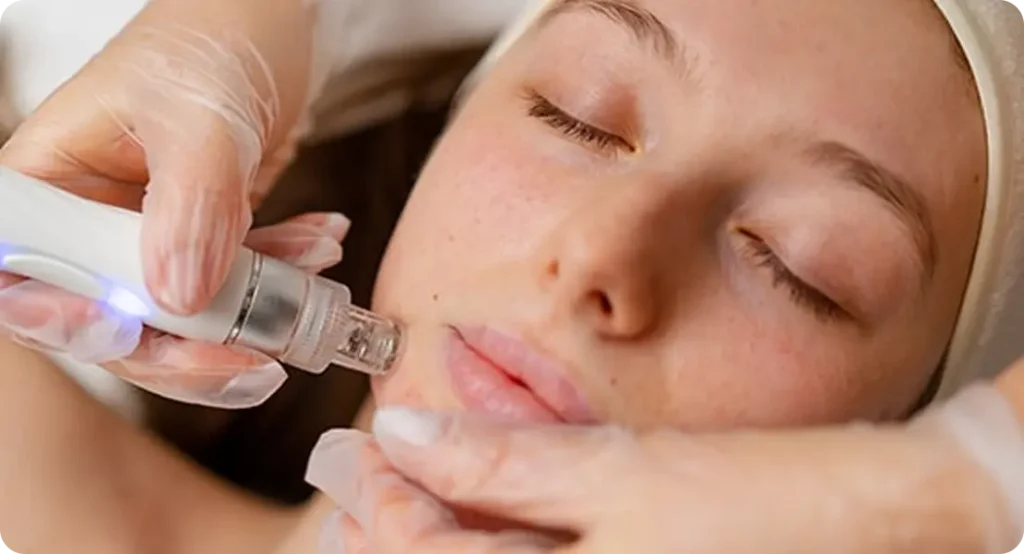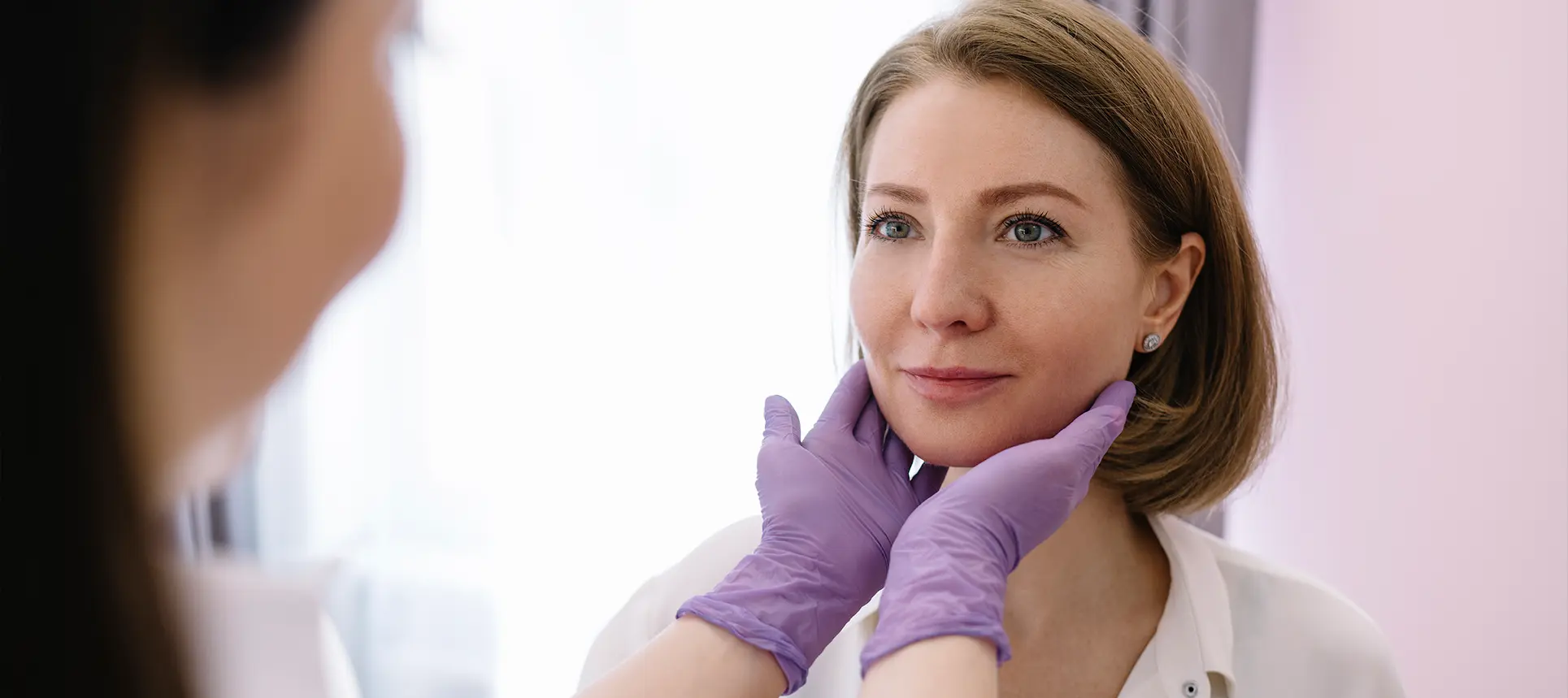Ever found yourself staring at your skin in the mirror, wondering whether that rash, bump or mole is something to worry about—and whether it’s time to see a dermatologist? You’re not alone. Lots of people have questions about what dermatologists actually do, how they can help, and what goes on during an appointment. It’s normal to feel a bit unsure, especially if it’s your first time seeing a skin specialist.
That’s why I’ve pulled together 20 of the most common questions patients ask dermatologists—not about conditions, but about the profession itself. We’ll cover everything from training and treatments to how to get the most out of your visit. Think of this as your insider guide to the world of dermatology, written in plain English, without any fluff.
So, let’s jump straight in. Here are the top questions patients ask about dermatologists—answered simply and directly.
1. What exactly does a dermatologist do?
Dermatologists are medical doctors who specialise in diagnosing and treating conditions that affect the skin, hair, and nails. That might sound broad, and that’s because it is! From acne and eczema to skin cancer and hair loss, dermatologists handle everything related to the body’s largest organ. They’re trained to recognise hundreds of different conditions—some of which look incredibly similar on the surface.
But it’s not just about spotting rashes or prescribing creams. Dermatologists also perform a variety of medical and surgical procedures. This can include mole removals, skin biopsies, laser treatments, and cosmetic work like anti-wrinkle injections or chemical peels. Some also sub-specialise in areas like paediatric dermatology or dermatopathology, which is the study of skin diseases under the microscope.

So in a nutshell, dermatologists are skin specialists with both medical and procedural skills. They can help with everything from annoying breakouts to serious illnesses, and they often work closely with other healthcare professionals to ensure you get the right care. If your skin is trying to tell you something, a dermatologist is the one who can help interpret the message.
2. How is a dermatologist different from a beautician or aesthetician?
This is a common question, especially with so many people offering skincare treatments these days. The key difference lies in the training and the level of medical expertise. Dermatologists are doctors who have completed years of medical school, followed by specialist training in skin-related conditions. Their work is rooted in science and clinical evidence, and they’re qualified to diagnose and treat medical issues.
Beauticians and aestheticians, on the other hand, are trained in non-medical cosmetic treatments—like facials, waxing, or certain types of skin exfoliation. They can be brilliant at helping your skin look and feel great, but they’re not trained to diagnose conditions, prescribe medication, or perform medical procedures. If something on your skin looks suspicious or isn’t responding to over-the-counter care, you’ll need a dermatologist to step in.
That said, there’s room for both professionals. In fact, dermatologists often work alongside trained aestheticians in clinical settings. The key is knowing who to see and when. For general skin maintenance, a beautician might be fine. But if you’re dealing with something more complex, unusual, or persistent—it’s time to call in the dermatologist.
3. Do I need a referral to see a dermatologist?
It depends on how you’re accessing care. If you’re going through the NHS, then yes, you’ll usually need a referral from your GP. The idea is to ensure that only patients who genuinely need specialist care are referred on. Your GP can assess the problem and decide whether it needs the attention of a dermatologist, or if it can be managed in primary care.
If you’re going privately, though, things are a bit more flexible. You can usually book a dermatology appointment directly without a referral. However, some private medical insurance providers still require a GP referral for the appointment to be covered under your policy—so it’s worth checking first if you’re using insurance.
Either way, it’s always helpful to keep your GP in the loop, even if you go private. They’ll want to know about any diagnoses or treatments you receive so they can update your medical records and offer consistent care going forward.
4. What should I expect during my first dermatology appointment?
Most first-time dermatology appointments start with a conversation. The dermatologist will ask about your skin concerns, how long you’ve had them, whether they’ve changed, and what treatments (if any) you’ve already tried. They may also ask about your medical history, family background, medications, and even lifestyle habits that could be affecting your skin.

After that, you’ll have a skin examination. Depending on your concern, this might be focused on one area, or it could be a full-body skin check, particularly if you’re worried about moles or skin cancer. Don’t worry—it’s all done professionally and respectfully, and you’ll be given privacy to undress if needed. The dermatologist might use tools like a dermatoscope to look more closely at specific areas.
Finally, you’ll get a diagnosis—or at least a plan for further testing if things aren’t clear yet. That could involve a biopsy, blood test, or photographs for monitoring. Treatment might be started straight away, or you may be asked to return for follow-up. You’ll leave the appointment with a better understanding of what’s going on and what the next steps are.
5. Are dermatologists only for people with serious skin problems?
Not at all. While dermatologists do treat serious conditions like melanoma or autoimmune skin diseases, they also help with everyday skin concerns that affect your quality of life—like acne, rosacea, or persistent rashes. If something’s bothering you, even if it seems small or cosmetic, a dermatologist is the right person to talk to.
In fact, addressing skin issues early can often prevent them from becoming more serious. Take acne, for example. Left untreated, it can lead to scarring or long-term pigmentation issues. Or think about a harmless-looking mole that turns out to be something more. The earlier you catch these things, the easier they are to treat.
So don’t wait for a crisis. If your skin is affecting your confidence, your comfort, or your daily life—it’s worth speaking to a dermatologist. Their job is to help you feel good in your skin, no matter what the issue is.
6. How are dermatologists trained?
Dermatologists go through extensive medical training before they can call themselves specialists. In the UK, it all starts with a medical degree—usually five or six years of university. After that, they complete a two-year foundation programme, which is a general introduction to medical practice across various hospital departments. Then comes core medical training, typically lasting another two years.
After all that, doctors apply to specialise in dermatology. This specialist training takes a minimum of four years and involves intense study of skin conditions, surgical skills, and diagnostic procedures. Many dermatologists also spend time conducting research, attending conferences, and keeping up to date with new treatments and technologies in the field.
In total, you’re looking at well over a decade of education and training. So when you sit down with a dermatologist, you’re speaking to someone who’s spent years honing their knowledge, examining thousands of patients, and developing an expert eye for even the most subtle changes in the skin.
7. Can dermatologists help with cosmetic concerns too?
Absolutely. Dermatology isn’t just about disease—it’s also about aesthetics. Many dermatologists offer treatments for fine lines, wrinkles, pigmentation, acne scarring, and other concerns that affect how your skin looks and feels. Because they understand the science of skin, they’re in a strong position to deliver cosmetic treatments safely and effectively.
Common procedures offered by dermatologists include chemical peels, laser therapy, microneedling, and injectable treatments like Botox and dermal fillers. What sets them apart from non-medical providers is their ability to assess whether a cosmetic issue has an underlying medical cause—and to tailor treatments to your skin type and health background.

So if you’re considering a cosmetic treatment, a dermatologist can help you weigh up the options, avoid unnecessary risks, and make a plan that actually works. You’ll get a more personalised approach and the reassurance that your skin is in expert hands.
8. Is it embarrassing to show my skin to a dermatologist?
This one comes up more than you might think—and it’s completely normal to feel a bit self-conscious. But let me reassure you: dermatologists have truly seen it all. Their job is to look at skin in every shape, colour, and condition, and they do it day in and day out. What might feel embarrassing to you is probably something they’ve seen hundreds of times before.
Remember, dermatologists aren’t there to judge—they’re there to help. Whether it’s a rash in a private area, a breakout that’s knocked your confidence, or a strange patch you’re worried about, your dermatologist is focused on one thing: getting to the root of the problem. They approach every case with clinical professionalism and care.
If you’re feeling anxious, it’s okay to say so. Most dermatologists will take a moment to talk you through what to expect, and they’ll always respect your comfort and privacy. You might be surprised how quickly that initial awkwardness disappears once you’re in good hands.
9. Do dermatologists treat hair and nail problems as well?
Yes, they do—though many people don’t realise this. Dermatologists are trained to deal with conditions affecting the skin, hair, and nails, so if you’re experiencing hair thinning, scalp issues, or nail discolouration, they’re the right person to see. These problems might seem cosmetic at first glance, but they often have underlying medical causes.
Hair loss, for example, can be linked to hormonal imbalances, autoimmune conditions, or even iron deficiency. A dermatologist can help identify the cause and recommend treatments ranging from topical solutions to prescription medication. Likewise, nail changes could be a sign of fungal infection, psoriasis, or other health conditions.
It’s all interconnected. The skin, hair, and nails often reflect what’s going on inside your body. That’s why dermatologists take a holistic approach when diagnosing and treating these issues—they don’t just treat the surface, they dig deeper to find out what’s really going on.
10. How do I choose the right dermatologist for me?
Choosing the right dermatologist is a bit like finding a good GP—you want someone you feel comfortable with and who understands your concerns. If you’re going through the NHS, you won’t usually have a choice, but if you’re booking privately, take some time to do a little research. Look at their qualifications, areas of interest, and patient reviews if they’re available.
It also helps to know what kind of issue you’re dealing with. Some dermatologists have particular expertise in cosmetic dermatology, others in skin cancer, paediatrics, or autoimmune skin diseases. If your concern is very specific, it’s worth finding someone with a special interest in that area. Don’t be afraid to ask questions before booking your appointment—it’s perfectly reasonable to want to feel confident in your choice.
And finally, trust your instincts. A good dermatologist will listen carefully, explain things clearly, and make you feel at ease. If something doesn’t sit right, you’re under no obligation to stay with that provider—your comfort and trust are key to getting the best care.
11. Why do dermatologists often recommend sunscreen all year round?
You’ve probably heard it before—“wear sunscreen every day”—and yes, dermatologists really do mean every day. Even in winter. Even when it’s cloudy. The reason is simple: UV radiation from the sun is one of the biggest contributors to premature ageing and skin cancer, and it doesn’t disappear just because it’s cold or grey outside. UVA rays, in particular, can penetrate clouds and even glass, meaning your skin is still exposed whether you’re out for a walk or sitting by a window.
Dermatologists see first-hand what long-term sun exposure can do, from deep wrinkles to pigmentation and more serious problems like melanoma. Daily sunscreen use isn’t about being fussy—it’s about prevention. It’s a simple habit that can make a huge difference over time. Think of it like brushing your teeth—small effort, big benefit.

If you’re not keen on sticky or heavy sunscreens, don’t worry. There are plenty of lightweight options now that sit comfortably under makeup or moisturiser. And no, you don’t need anything fancy. A broad-spectrum SPF 30 or higher will do the job just fine. It’s one of the top pieces of advice dermatologists give—and for good reason.
12. What kinds of procedures can dermatologists perform?
It might surprise you to learn just how hands-on dermatology can be. Dermatologists don’t just write prescriptions—they also perform a wide range of medical and cosmetic procedures. These include mole removals, skin biopsies, cyst excisions, cryotherapy (freezing off warts or growths), and even minor surgical procedures for skin cancer.
Cosmetically, dermatologists may offer treatments like laser therapy, Botox, fillers, chemical peels, and microneedling. These aren’t just for aesthetics—they’re also used to treat scarring, rosacea, pigmentation, and other chronic issues. Because dermatologists understand both the surface and deeper layers of the skin, they’re uniquely qualified to deliver these treatments safely and effectively.
It’s reassuring to know that these procedures are being done by someone with deep medical knowledge and years of training. Whether you’re having a suspicious mole removed or simply hoping to improve your skin’s appearance, dermatologists have the expertise to carry out the procedure with care—and to recognise when something might need further attention.
13. How often should I see a dermatologist?
There’s no one-size-fits-all answer to this—it really depends on your skin and your health history. Some people might only need to see a dermatologist once for a particular issue, while others might benefit from regular check-ups. If you’ve got a history of skin cancer, or you’ve got lots of moles, annual skin checks are usually recommended. That way, any suspicious changes can be caught early.
If you’re managing a long-term skin condition like acne, eczema or psoriasis, your dermatologist might suggest follow-up appointments every few months to tweak your treatment plan. And if you’re undergoing cosmetic treatments, you’ll likely have sessions spaced out over a series of weeks or months depending on the procedure.
As a general rule, if you notice a change in your skin that doesn’t go away within a few weeks—or something that looks or feels different—it’s worth making an appointment. Early action is always better than waiting for something to become more complicated. When in doubt, check it out.
14. Are dermatology treatments covered by the NHS?
Yes, many dermatology treatments are available on the NHS, particularly when they relate to medical or potentially serious skin conditions. Things like skin cancer assessments, psoriasis treatment, eczema management, mole monitoring, and acne that hasn’t responded to basic treatments are all within the NHS remit. You’ll usually need to be referred by your GP, and there can sometimes be waiting lists, depending on your area.
However, cosmetic procedures—like Botox, fillers, or treatments for pigmentation purely for aesthetic reasons—are not covered by the NHS. These are considered elective and must be paid for privately. If your concern is borderline (say, scarring that’s affecting your mental health), your GP or dermatologist might make a case for NHS funding, but this varies a lot depending on local commissioning guidelines.
If you’re unsure whether your concern is “medical enough”, it’s still worth speaking to your GP. They can advise you on the next steps and whether a referral is appropriate. The NHS is there for your health and wellbeing, and that includes skin conditions that impact your quality of life.
15. Can I bring up more than one concern in a dermatology appointment?
This is something many patients wonder, especially if they’ve waited a while for the appointment. Generally speaking, yes—you can bring up more than one concern. Dermatologists understand that people often have several questions or skin issues they want to discuss. However, time is usually limited, especially in NHS appointments, so it helps to come prepared and prioritise your concerns.

If you’ve got two or three issues—say, a changing mole, some adult acne, and dry patches on your arms—mention them all at the start of the consultation. That way, the dermatologist can decide what to focus on and whether anything needs a follow-up. Being clear and organised can make the appointment smoother and more productive.
For more complex or cosmetic issues, your dermatologist might suggest a separate appointment to allow enough time for a full discussion. But don’t feel shy about raising everything that’s on your mind—they’d much rather hear it all than have something important go unmentioned.
16. Do dermatologists treat children as well as adults?
Yes, they do. Dermatologists are trained to treat patients of all ages, including babies, toddlers, and teenagers. In fact, children often present with skin issues that are quite different from those seen in adults—things like birthmarks, eczema, warts, and unusual rashes. Paediatric dermatology is a sub-speciality in itself, and many consultants have additional training or experience in treating younger patients.
Of course, seeing a child is a bit different from treating an adult. Dermatologists are usually great at making younger patients feel comfortable, using simple language, a calm approach, and plenty of reassurance. Parents are encouraged to ask questions too—it’s a team effort to figure out what’s going on and how to help.
If your child has a skin concern that isn’t improving with over-the-counter treatments, or if you’re just unsure what you’re dealing with, a visit to a dermatologist can make all the difference. Early intervention often leads to quicker relief—and fewer long-term effects on the skin.
17. Can a dermatologist help with stress-related skin issues?
Absolutely. Stress can play a huge role in triggering or worsening skin conditions. Things like eczema, psoriasis, rosacea, and even acne often flare up when you’re feeling overwhelmed or run down. And while dermatologists aren’t counsellors, they do understand the connection between the mind and the skin—something known as psychodermatology.
A good dermatologist will ask about stress levels during your consultation, especially if your skin condition seems linked to your lifestyle or emotional state. They may recommend a treatment plan that tackles both the physical symptoms and the underlying stress triggers. That could include topical medications, oral treatments, or even referring you to a therapist or mental health professional if needed.

Just knowing that your skin issue isn’t “all in your head” can be incredibly validating. Your skin reacts to what’s going on inside, and dermatologists are trained to recognise those patterns. So if stress is wreaking havoc on your skin, it’s worth mentioning—there’s help available, and you’re not alone.
18. How long does it take for a dermatology treatment to work?
It really depends on the condition and the treatment being used. Some things—like removing a wart or freezing off a skin tag—can be resolved almost instantly. Others, like treating acne, pigmentation, or chronic rashes, may take weeks or even months to show full results. The key is consistency and realistic expectations.
Dermatologists will usually explain the expected timeline during your appointment. For example, prescription creams might take six to eight weeks before you start to see improvement, and treatments like laser therapy often require multiple sessions. It can be tempting to give up if you don’t see fast results, but dermatology often involves playing the long game.
That said, if you’re not seeing any change after a reasonable amount of time—or if your skin gets worse—it’s important to follow up. Dermatologists can adjust your treatment or explore alternative approaches. The best results come when you’re working together over time, so don’t be discouraged if progress feels a bit slow at first.
19. What’s the difference between a dermatologist and a skin clinic practitioner?
This is a really important distinction. A dermatologist is a medically qualified doctor who has undergone specialist training in skin health and disease. They’re registered with the General Medical Council (GMC) and work under strict clinical standards. A skin clinic practitioner, on the other hand, might not have any medical training at all.
Many skin clinics are run by aestheticians or beauty therapists who offer services like facials, peels, or light-based treatments. Some are highly experienced in cosmetic procedures, but they’re not trained to diagnose medical conditions or manage more serious skin issues. That’s not to say they aren’t skilled—but the scope of what they can do is different.
If your concern is cosmetic and straightforward, a reputable clinic might offer a good solution. But if there’s any medical aspect to your skin issue—or if you’re not even sure what it is—it’s safer to start with a dermatologist. It’s about matching the right professional to your needs, and not taking risks when it comes to your health.
20. What should I bring to a dermatology appointment?
Being prepared can really help you get the most out of your dermatology visit. Start with a list of your current medications, including anything over-the-counter like creams, supplements, or herbal remedies. It’s also useful to bring photos of the skin issue if it comes and goes, or if it was worse before the appointment—especially with rashes or reactions that have settled a bit.
If you’ve tried treatments in the past, jot down the names and how well (or not) they worked. And if your skin issue might be linked to a product—like a new shampoo or face cream—bring that along too. The more context you give, the easier it is for the dermatologist to get to the root of the issue.
Finally, write down any questions you’ve got beforehand. It’s easy to forget what you wanted to ask once the appointment gets going, especially if there’s a lot to take in. A little preparation goes a long way in making sure you leave with clarity and confidence.
Final Thoughts
Seeing a dermatologist doesn’t have to be intimidating or something you only consider when things get really bad. Whether it’s a niggling concern, a cosmetic tweak, or a full-blown skin issue, dermatologists are here to help you understand your skin better—and feel more comfortable in it. They’ve got the training, the tools, and the experience to make sense of what’s going on beneath the surface.
Hopefully, this guide has answered some of the questions you’ve had in the back of your mind—whether it’s about what happens during an appointment, who dermatologists actually treat, or how to choose the right one for you. It’s all about demystifying the process and helping you feel more confident about taking that next step, if and when you need to.
At the end of the day, your skin is more than just a protective barrier—it’s a big part of your identity and wellbeing. So if something doesn’t feel right, don’t put it off. You can contact us at The London Dermatology Centre to book a consultation with one of our expert consultant dermatologists. We’re here to help you take the guesswork out of skin health and get you back to feeling like yourself again.
